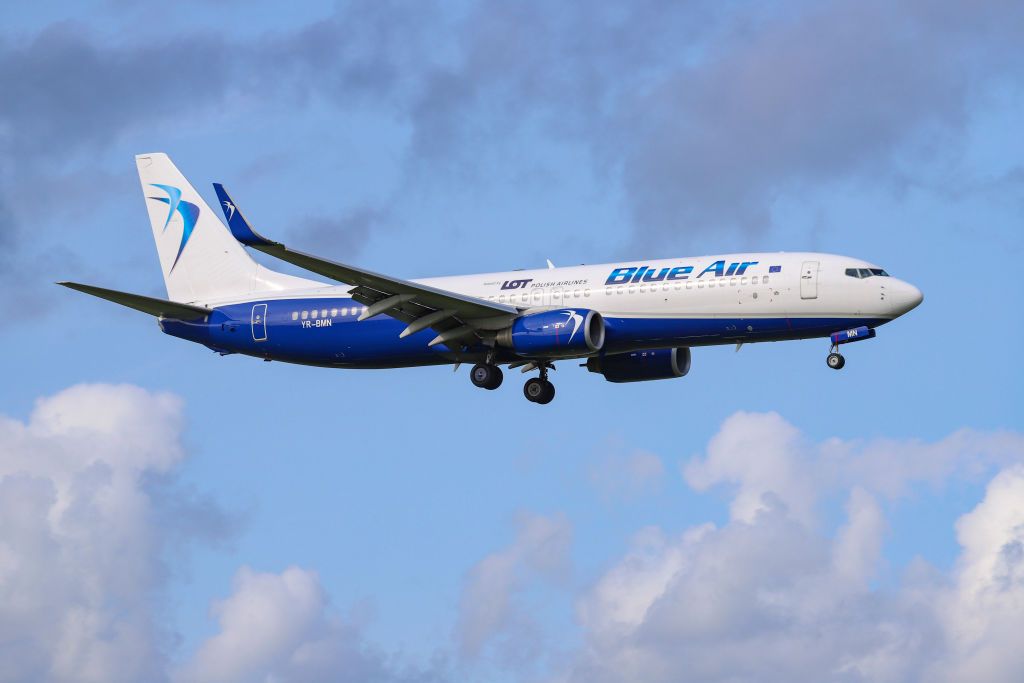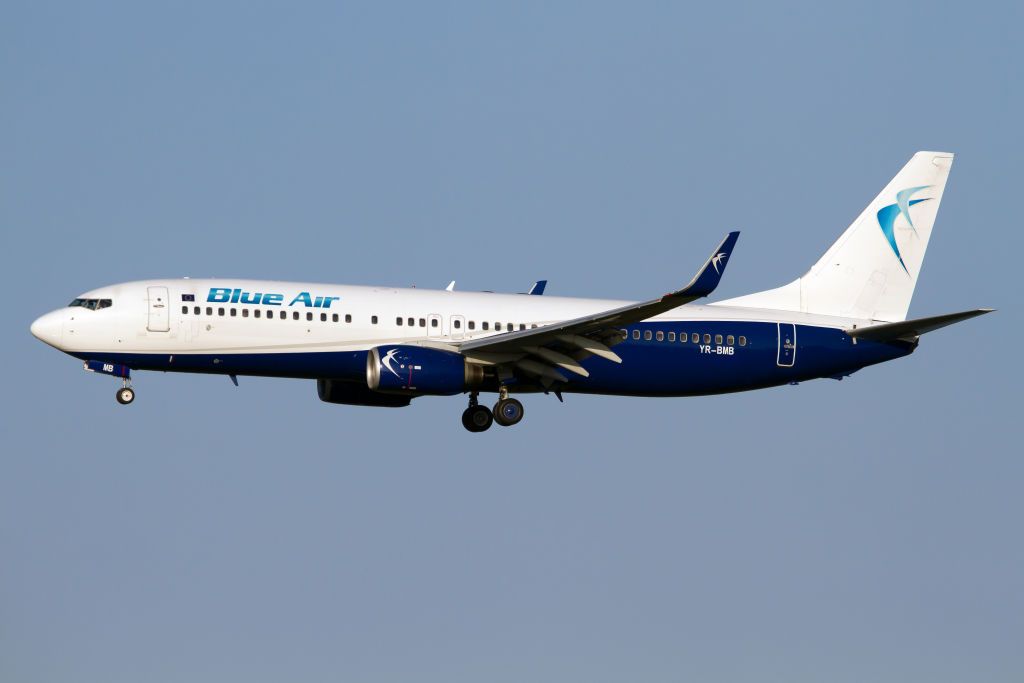A Blue Air passenger flight made a landing hard enough for the 737’s fuselage to suffer structural damage. This accident happened on the 6th of May, involving flight 0B-143. It originated in Romania’s capital airport Bucharest Henri Coandă International Airport (OTP) heading to Naples Airport (NAP) in southern Italy. This is a regular service that the airline performs three times a week. The exact number of passengers on board has not been shared by the airline, but there were no reports of serious injury.Nothing was obviously out of the ordinary with the flight’s departure from Romania. Everything was routine until its arrival in Naples. The aircraft landed shortly after four in the afternoon on runway 24 in sunny Naples. It was then that the crew of the Blue Air 737 made a hard landing.
A picture of the accident aircraft shows that it suffered a tail strike. As it stands, this is the only verified image circulating online. Tail strikes can cause significant damage to the pressure bulkhead. The bad news comes shortly after Blue Air received the title of largest Romania-Portugal carrier having opened new routes to Porto and Madeira in mid-April.
The parameters of a hard landing
The normal descent rate is 60-180 FPM (feet per minute) Anything over 240 FPM is generally considered a hard landing and may result in a maintenance inspection. Most modern tires and landing gear are rated to 25-50% more than the maximum landing weight of the aircraft.
The authorities are said to be investigating the circumstances of this event. Runway 24 in Naples is slightly uphill. At that time, the wind wasn’t very strong and blew almost straight down the runway. But the wind direction did vary slightly. A clear cause for the hard landing has yet to be identified.
The Italian authorities rated this Blue Air hard landing as an accident due to the extent of the damage. Immediately after the event, the flight crew were able to taxi to the apron normally. The aircraft remains on the ground in Naples, nine days after the accident.
The future of YR-BMM
The specific Blue Air aircraft suffering this damage from its hard landing is a Boeing 737-800, with tail number YR-BMM. It is just over twelve years old, entering service in March 2010 with Pegasus Airlines, in Turkey. Blue Air acquired it to its fleet in December 2017. The Bucharest-based airline has an all-737 fleet but operates several different variants. The 737-800 is the most common of those, followed by the 737-8. Blue Air also has three 737 “Classic” models. It's hard to say what exactly the airline will do with YR-BMM. Airlines are reluctant to write off aircraft completely and sometimes repurpose the body for training.
Looking at Blue Air's safety record?
Blue Air has never had any fatal incidents concerning its aviation activities. The airline is littered with small incidents over the years. The most recent prior to this event was Blue Air Boeing 737-800, registration YR-BMQ, performing a domestic Swedish positioning flight 0B-9046 from Stockholm to Gothenburg. The aircraft was climbing through flight level 280 out of Stockholm when the crew stopped the climb and descended the aircraft to flight level 240 due to a crack in the windshield.


